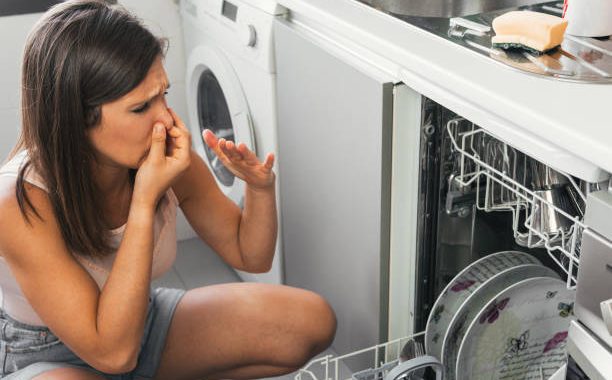Both the wash mode you choose and the model of the dishwasher depend on how much water it will consume. On average, it is from 10 to 13 liters per procedure as a whole. In contrast to handwashing, all water is used only for its intended purpose without any losses.
During the process, the working fluid is cleaned through special filters and comes to rinse completely refreshed. Economical modes reduce the amount of water used by 25%.
The economic efficiency of dishwashers is indicated by symbols. The most economical units are marked with the letters A, B, and C. They consume 9 to 16 liters. Medium-efficient dishwashers are marked with the letters D and E. They consume slightly more water, up to 20 liters. Low-economy machines with the letters F and G need 26 liters per cycle.
How to load the dishes correctly?
Sometimes wrong loading of dishes becomes the reason for the non-fulfillment of dishwashing programs, embodied in it, and, as a consequence, for the worsening of washing quality. All the subtleties of loading the dishes into the machine are listed in our recommended article.
If you place large kitchen utensils in the center – pots, pans, trays, cutting boards, trays, the water flow will be blocked. It’s better to move it all closer to the edges or put it in the lower compartment.
If there are a lot of dishes that need to be washed, do not treat them all at once. The water and detergents will not have enough free contact with the surfaces of the cooking utensils.
To do this, free gaps must be left between the cooking utensils. The dishwasher unit will not be able to do its job properly if overloaded.
For the proper functioning of the dishwasher, it is important that the powder or detergent tablets are strictly in the compartment intended for this purpose. Because the cycle is programmed in advance, all the products come into action at the exact time set.
If there are streaks on the dishes, it indicates an excess of salt or rinses aid. When there is not enough detergent, dirty streaks will be left. If you find food residue on the bottom of the unit and on the dishes, you should check the filters. Most likely, they are clogged. Experts advise cleaning them after one or two washes.
Long-time not washed or burned dishes are subject to preliminary manual cleaning. When excessive foam forms during rinsing, it means that you loaded an excessive amount of rinse aid. In this case, the correct adjustment of the dispenser or the addition of a defoamer in the form of a powder will help.
Is your dishwasher using too much water or not working at all?
Whether you will be able to find the breakage on your own or at some stage of the search you will call a master – it is up to you to decide. We will only note that if you have no experience disassembling and reassembling the dishwasher, it is better to limit the external examination and search for simple damages, and then call our master. Chula Vista Appliance Repair Company is happy to offer efficient dishwasher repair services in and around San Diego County. Our team of experts is well-equipped and ready to handle all types of dishwasher repairs, no matter how complicated. We strive to provide superior repairs using only high-quality replacement parts backed by the manufacturer’s warranty, so you can rely on a dishwasher repair specialist to fix the problem and keep your machine working properly for a long time.
Contact us
(619) 880-5508


